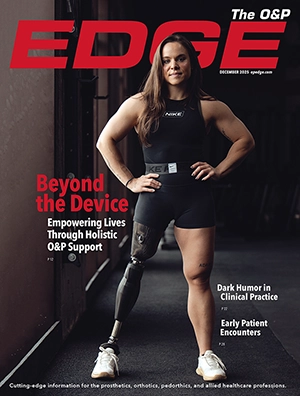Noting that amputations at or distal to the midtarsal level pose unique challenges for patients’ functionality, wellness, and quality of life, a research team conducted a scoping review to examine the impact of O&P devices on clinical and healthcare outcomes in this population. The researchers found that custom-made devices such as toe fillers and foot orthoses enhanced walking speed and plantar pressure distribution, and above-ankle devices were more effective than foot orthoses in more proximal amputations. Well-fitted devices increased satisfaction and quality of life, but economic impacts were less frequently addressed in the research.
The data was collected following a systematic search, which led to 59 relevant studies, primarily originating from the United States and Australia. Trauma (47.5 percent) and diabetes (35.6 percent) were the leading causes of amputations in the studies.
The most reported biomechanical outcomes were gait alterations (49.2 percent), which revealed deficits and improvements in spatiotemporal parameters (33.9 percent), and plantar pressure distribution (22 percent).
Despite 23.7 percent of the included studies being case reports, which have a higher risk of bias, the review underscored the essential role of O&P prescription based on tailored patient-centered care, the authors concluded.
The study, “Outcomes of prosthetic and orthotic use in individuals with a minor lower extremity amputation: A scoping review,” was published in Prosthetics and Orthotics International.




